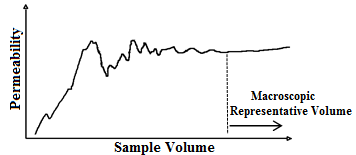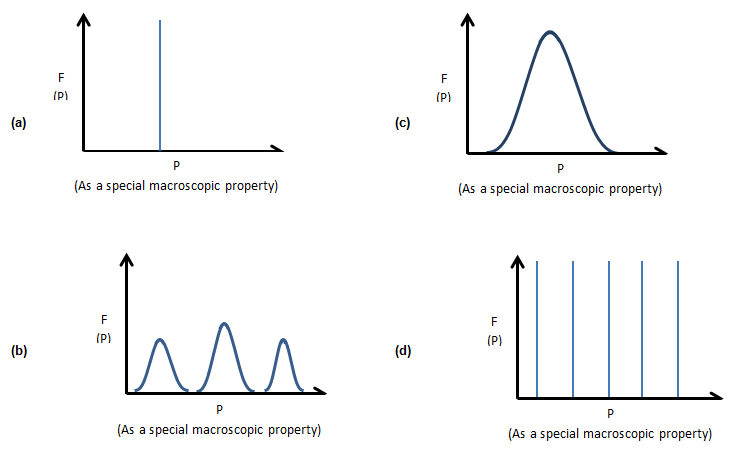Fundamentals of Fluid Flow in Porous Media
Chapter 2
Homogeneity
Homogeneous usually means describing a material or system that has the same properties at every point in space; in other words, uniform without irregularities. It also describes a substance or an object whose properties do not vary with position. To apply this term on a porous medium we should define a “macroscopic system”. A few sand grains cemented together constitute a microscopic rather than macroscopic porous medium. The properties of a microscopic sample are not expected to be representative of the macroscopic porous medium from which it was removed.
Let us suppose that a macroscopic pore structure parameter such as porosity or permeability is determined in a series of samples of increasing size, taking from a large porous sample, and the result is plotted against the sample’s size. It could be seen that initially the calculated properties change with sample size and there are some fluctuations in the results with increasing sample size. With increasing sample size the amplitude of these fluctuations decreases and gradually diminishes until finally a smooth line is obtained after a certain sample size (Figure 2‑1). By definition “the sample said to be macroscopically representative whenever the macroscopic measured property (such as porosity and permeability) is not fluctuating any more when including more material around the initial sampling point, but its variation can be represented by a smooth line” Assume we run a test to determine the homogeneity of the porous medium. In this test along an arbitrary direction we choose different macroscopic samples and we measure their macroscopic properties. By increasing the number of samples we can plot a probability density function (PDF) for the measured properties. The PDF plot could have different shapes according to the homogeneity or heterogeneity of the medium. The simplest case is when the PDF is a delta function (vertical line) that shows the property is constant regardless to the sampling position (Figure 2‑2.a). Thus we can confirm the homogeneity of the medium. While proceeding in an arbitrary direction in the medium, we may find that the measured macroscopic property first remains constant but it suddenly changes to a different but constant value. In this case the medium is said to be “macroscopically heterogeneous in the discontinuous sense” (Figure 2‑2.b). Processing in any chosen direction in the medium, we may find that the property continuously changes according to the position of the samples. In this case the medium is said to be “macroscopically heterogeneous in continuous sense” (Figure 2‑2.c). Finally it may happen that the function that representing the variation of parameter with position is piecewise continuous. In this case the medium is said to be “macroscopically heterogeneous in both continuous and discontinuous sense” (Figure 2‑2.d). [2] Greenkorn and Kessler (1970) If you have any questions at all, please feel free to ask PERM! We are here to help the community.
Figure 2-1: Dependence of Permeability on Sample Volume
Figure 2-2: A Probability Density Function can be used to find the homogeneity or heterogeneity type of a porous medium[2]:
a) Macroscopically Homogeneous System; b) Macroscopically Heterogeneous in Discontinuous Sense; c) Macroscopically Heterogeneous in Continuous Sense; d) Macroscopically Heterogeneous in both Continuous and Discontinuous SenseReferences
Questions?
